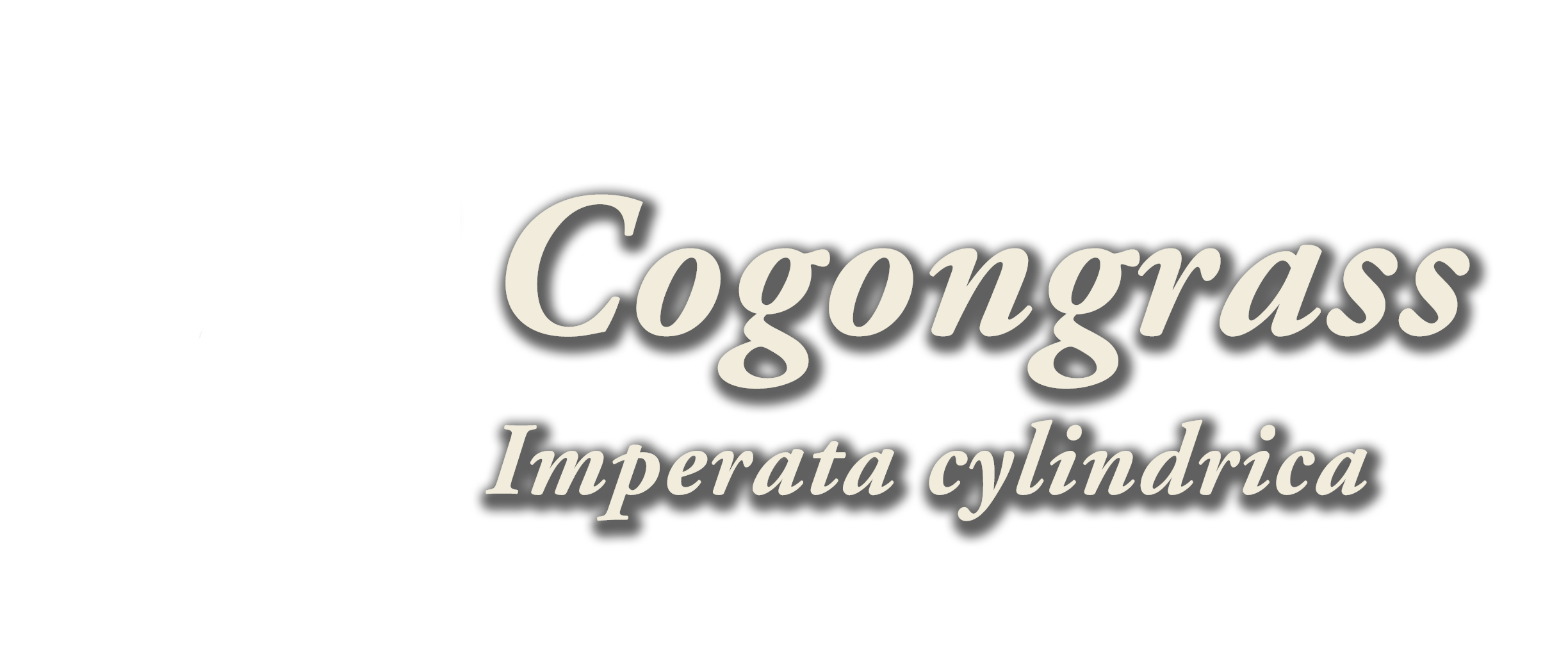A Cogongrass Management Guide
Confronting the Cogongrass Crisis Across the South
Edited by Nancy J. Loewenstein and James H. Miller
Hosted by the Alabama Cooperative Extension System, Auburn School of Forestry and Wildlife Sciences, USDA Forest Service
November 7th and 8th, 2007
Arthur R. Outlaw Mobile Convention Center
Mobile, Alabama
Cogongrass is a growing threat as it continues its rapid spread across the Southeast, reducing forest and pasture productivity, destroying wildlife habitat, impacting rights of ways and presenting an extreme fire hazard.
The purpose of this conference is to convey the latest understanding in restoring lands, managing, controlling and eradicating cogongrass, and to explore existing and needed networks for coordinating strategies for successful cogongrass management.
Proceedings
Introduction – Abstract
The Context of the South’s Cogongrass Crisis
Dr. Jim Miller, U.S. Forest Service R&D – Abstract, PowerPoint
Cogongrass: The Plant’s Biology, Distribution, and Impacts in the Southeastern US
Dr. Greg MacDonald, University of Florida – Abstract, PowerPoint
Cogongrass Distribution and Spread Prevention
Dr. Dave Moorhead, The University of Georgia – Abstract, PowerPoint
What Works on Cogongrass and What Does Not:
A Summary of nearly 10 years of Cogongrass Research in Mississippi
Dr. John Byrd, Mississippi State University – Abstract, PowerPoint
Cogongrass in Pastures and Hay-Meadows in Louisiana:
A Historical Perspective and Control Recommendations
Dr. Dearl Sanders, Louisiana State University AgCenter – Abstract, PowerPoint
Managing Cogongrass on Rights-of-way:
a challenge to prevent future spread.
Dr. Wilson Faircloth, USDA Agricultural Research Service – Abstract, PowerPoint
Operational Considerations for Control of Cogongrass
Lee Atkins, Progressive Solutions – Abstract, PowerPoint
What Research has found about Establishing Loblolly Pines in Cogongrass Infestations
Dr. Jim Miller, U.S. Forest Service R&D – Abstract, PowerPoint
What Research Has Found about Cogongrass Spread and Control in the Longleaf Pine Ecosystem
Dr. Shibu Jose, University of Florida – Abstract, PowerPoint
What a Forest Practitioner Has Learned by Developing an Operational Program for Cogongrass Management
George Robertson, Scotch Lumber Company Inc. – Abstract, PowerPoint
What a Right-of-way Manager has learned during Operational Treatments
Howard Peavey, Alabama Department of Transportation – Abstract, PowerPoint
How to Organize and Perform a Right-of-way Program with Partners
Chris Bryan, Mississippi Department of Transportation – Abstract, PowerPoint
Cost-share, Incentive and Grant Programs Currently Available to Combat Cogongrass
Dr. John Taylor, USDA Forest Service State & Private Forestry – Abstract, PowerPoint
How Can We Organize Ourselves at the County Level to be Effective at Combating Cogongrass
Linda Conway Duever, Conway Conservation LLC – Abstract, PowerPoint
Georgia’s Cogongrass Efforts: How One State Organized to be Effective in Combating Cogongrass
James Johnson, Georgia Forestry Commission – Abstract, PowerPoint
What We Have Learned and What We Need To Do Next
Dr. Jim Miller, U.S. Forest Service R&D – Abstract, PowerPoint
Herbicide products with imazapyr and glyphosate active ingredients. – Table
Establishment of Loblolly Pine in Cogongrass Now in the 6th Growing Season – Abstract
Pesticide Precautionary Statement – Text
Recommended Citation Format:
Entire volume:
Loewenstein, N.J. and Miller, J.H, editors. 2007. Proceedings of the Regional Cogongrass Conference: A Cogongrass Management Guide. November 7-8, 2007, Mobile, AL. Alabama Cooperative Extension System, Auburn University, AL. 77 pp.
Individual papers:
Miller, J.H. 2007. Context of the Cogongrass Crisis. pp. 6-9 In Proceedings of the Regional Cogongrass Conference: A Cogongrass Management Guide. (N.J. Loewenstein and J.H. Miller, eds.), November 7-8, 2007, Mobile, AL. Alabama Cooperative Extension System, Auburn University, AL.
Published by the Alabama Cooperative Extension System (Alabama A&M and Auburn Universities) in cooperation with the U.S. Department of Agriculture. An Equal Opportunity Educator and Employer.
Acknowledgments
We are very grateful to the conference speakers and field trip guides for the time and effort they invested in the conference presentations and proceedings. We are grateful for the opportunity to tap into their vast experience and knowledge, as well as that of the many other practitioners and researchers whose work they have built upon.
We are also grateful to Erwin Chambliss for his contributions to the proceedings and other aspects of the conference. Bessie Buchanan and Ginger Phillabaum were responsible for many of the behind-the-scenes conference duties, and for that we are immensely grateful. We also thank Andrea Tidwell for her help with the ‘busy work’.
Sincere thanks are also extended to the conference sponsors, vendors and exhibitors who made this event possible.
Conference Sponsors
We sincerely thank the following sponsors for supporting this conference:
Platinum
Alabama Sustainable Forestry Initiative
Gold
Alabama Invasive Plant Council
USDA Forest Service Eastern Forest Environmental Threat Assessment Center
USDA Forest Service Forest Health Protection State and Private Forestry
Silver
Alabama Power
Auburn Center for Forest Sustainability
Auburn School of Forestry and Wildlife Sciences
Baldwin County (Alabama) Soil and Water Conservation District
National Council for Air and Steam Improvement (NCASI)
National Park Service
Bronze
BASF
Lee County (Alabama) Soil and Water Conservation District
We sincerely thank the following vendors and exhibitors for supporting this conference:
Vendors
BASF
Coosa Trading Company (Eric Prater, vendor coordinator)
Dow AgroSciences
Helena Chemical
Nufarm Chemical
UAP Distribution, Inc.
Exhibitors
Alabama Invasive Plant Council
Florida A&M University
Mississippi Exotic Pest Plant Council
Mississippi USDA
Mississippi State University GeoResources Institute
Tennessee Exotic Pest Plant Council
